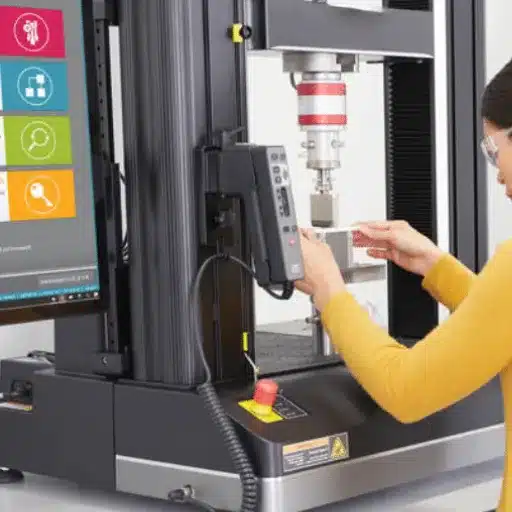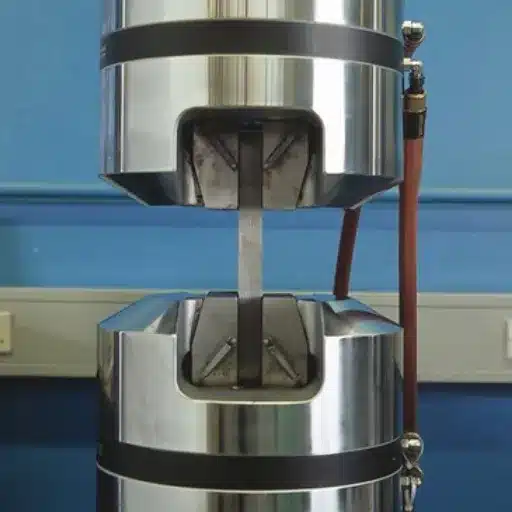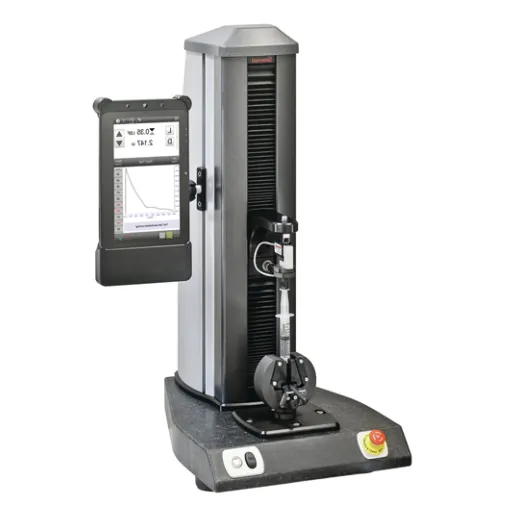From construction to aerospace, material testing accuracy and dependability is essential across all industries. At the center of these evaluations is the compression testing machine, which is the primary equipment used to evaluate a material’s strength and durability under load. Its productivity, nonetheless, relies on the correction of your calibration. In this blog, I will examine why it is necessary to calibrate compression testing machines, the steps that are involved, the best practices, and the main benefits of quality control. Whether you are a testing expert or managing the standards of material integrity, I am sure this guide will help you improve the dependability of your load testing.
Importance of Calibration in Compression Testing
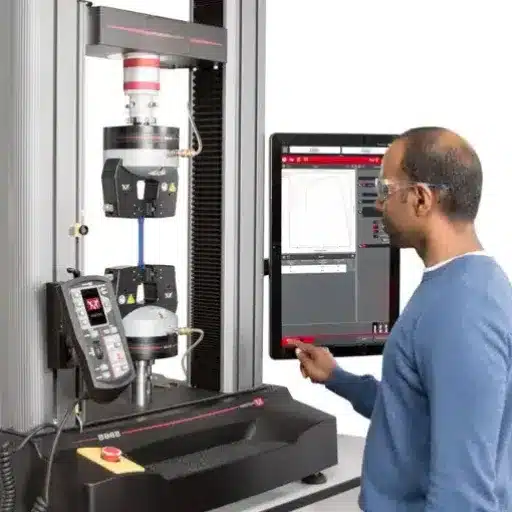
1Ensuring Accuracy in Test Results
Calibration of a compression testing machine is a proficient practice to safeguard the accuracy and reliability of testing results. The results from an uncalibrated compression testing machine are often fraught with deviations, sometimes of a significant nature. The presence of such deviations is undoubtedly injurious to the quality of testing and adds on to the challenges of decision making that revolves around material quality and compliance. Consistent proper calibration helps ensure that a machine consistently provides accurate results when tested under a set of defined conditions.
Proper calibration involves the testing of the measurement system and its subsequent adjustment to meet the required standards. This often involves the testing of the machine’s output to a known, certified reference standard. Proper maintenance of calibration practices not only allows for the discovery of deviations but also ensures that small errors are not compounded due to a lack of proper maintenance. Adhering to proper calibration practices allows operators to keep inaccuracies in check, reduces the risks involved in the operation, and allows the equipment to be used for a longer period.
In the end, calibration procedures increase confidence in the testing method. In every material testing, trustworthiness of the results whether the material conforms to the specifications in terms of safety, quality, and performance is paramount. For example, the construction or aerospace sector is heavily dependent on the materials that they use, and integrity of such materials impacts the safety of the structure that is being erected or a flying vehicle. Calibration procedures have to be implemented and are put in place so as to increase the confidence in the machinery and its ability to perform and verify the results, and also to maintain a sense of quality in the operations and materials being tested, but also for compliance with the standards of the enterprise and the industry as a whole.
2Reliability of Compression Testing Machines
Ensuring accurate testing results is achieved through calibration in compression testing. Its purpose is to fine-tune and validate the capabilities of a compression testing system to ascertain that it adheres to a set of predetermined requirements and criteria. As with any other piece of equipment, a compression testing machine is bound to be exposed to a certain degree of wear and tear due to environmental factors or mechanical problems. A thorough and regular calibration sweeps away all the inaccuracies.
With respect to a testing procedure, calibration adds value to the test results obtained since it confirms adherence to applicable standards. In fact, calibration significantly impacts result integrity and safety as well as performance in testing and verification of material properties. Calibrating a particular compression testing machine instills confidence in a laboratory as well as in an industry since the testing equipment is guaranteed to function within specified limits.
Certified procedures and trained specialists enhance the credibility of readings by amplifying the benefits of regular calibration and reducing errors. Moreover, following a prescribed timetable for calibrations cuts costs associated with machine repairs and decreases the frequency of calibrations. Coupling routine checks with calibrations help improve operational efficiency and ensures that the quality appreciated in the industry is maintained.
3Industry Standards: ISO and ASTM Compliance
The Calibration of a Compression Test is developed under the Guidance of International Standards, Specifically ISO and ASTM. These standards cover accuracy, uniformity, and consistency of measurement processes. Meeting these standards ensures that compression test calibrators for test equipment produce dependable results that comply with industry and global market requirements.
ISO standards of the International Organization for Standardization and ISO 7500-1 in particular, cover the methods of validating and calibrating force-measuring systems of testing machines. The standards are intended to make sure that test machines function adequately and results delivered are within permissible error margins while ASTM standards of The American Society for Testing and Materials, such as ASTM E4, also give detailed procedures concerning verifying the force application accuracy of compression testing machines. These standards also ensure that the machinery functions properly so as to maintain the trust in material testing.
Following the given industry standards enhances quality management but also increases trust in the results obtained from testing. When correct compliance procedures are followed, the likelihood of inaccuracies in data that would compromise the dependability of the product, its safety, or the attainment of statutory approvals, is greatly diminished. The ability to conduct calibration routinely according to ISO and ASTM regulations, enhances confidence in operations and allows companies to fulfill quality criteria in highly demanding markets.
Calibration Procedures for Compression Testing Machines
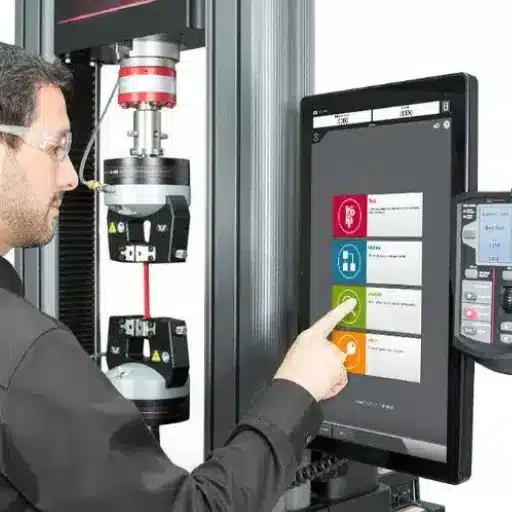
Step-by-Step Calibration Process
- 1 Preparation and Safety Checks:
Make sure that the compression testing device is clean, has no defects, and is well maintained before you start the calibration. Evaluate every part, load cell, platen, and frame. Make sure there is no damage or signs of wear. Validate that the testing area complies with standards such as temperature and humidity regulation for the least variance. Personnel should be protected at all times during the calibration procedure and follow safety standards.
- 2 Set Up The Calibration Equipment:
Carry out the calibration using a traceable calibration device, like a certified load cell or a proving ring. Follow the manufacturer’s instructions for installation or ISO 7500-1 or ASTM E4 standards. Make certain that the calibration device is aligned precisely to prevent any misinterpretation of the readings. Make sure data acquisition systems are connected and tested to confirm that they work.
- 3 Perform the Calibration Procedure:
Using the calibration device, apply the calibrating weights to the machine. At constant load intervals, compare the readings on the machine with those on the calibration device. Make proper notes on the readings and record any deviations. If deviations are out of range as per the relevant standards, make the necessary corrections and repeat the process until the standards are met.
- 4 Verification and Documentation:
While conducting the calibration procedure, make proper notes on the results, any modifications undertaken, the reference standards employed, and the environmental conditions. Keep the documentation in a safe location for quality assurance and regulatory inspections. Conduct a verification check to certify machine accuracy under working conditions so that the machine’s performance is trustworthy. In the future, regular calibration should be conducted to ensure continued compliance and accuracy.
Utilizing Load Cells for Precision Measurements
In compression testing, calibration is the process of assuring that all measurements taken are accurate and can be relied on. It is usually done by comparing the value, or the output, of the testing machine or load cell to a previously set value. This process also helps in determining the errors to be corrected so as to assume that the equipment is precise. A well-calibrated load cell therefore ensures that test results can be trusted and also ensures that the load cell complies with set standards.
The performance of the machine is evaluated during the calibration process and this is done under controlled conditions that emulate the conditions under which the device is expected to operate. As such, key parameters like applied force, displacement, and the general operation of the system are evaluated. To validate the accuracy of the device, technicians use traceable standards. These devices also help in maintaining uniformity and replicability in compression testing. For regulatory and quality assurance purposes, having properly maintained calibration records is a must.
Calibration should be performed after fixed periods to preserve accuracy or anytime the device is damaged, worn out, or its readings become erratic. Temperature and humidity levels are also considered to be environmental factors that affect the performance of the device; hence regular recalibration is warranted. With a stringent calibration plan in place, companies stand to save on rectification costs, ensure data integrity, and reduce errors related to compression testing.
Calibration Certificate: Importance and Requirements
A calibration certificate functions as a validation document that verifies that a specific device has undergone the prescribed testing process and has been calibrated according to set standards. It captures important information, such as the method of calibration, the outcome of the measurements, and the standards applied during the process. As for compression test machinery, the calibration certificate confirms that the equipment is functioning within the set tolerances, which is crucial for dependable test results in all its applications.
The importance of a calibration certificate is best understood in the context of its role in quality control and compliance. Trustworthy and precise test data from compression tests is really important to the construction, manufacturing, and materials testing industries. The certificate acts as proof that the test equipment meets the set regulations and industry standards, minimizing the risk of damage or malfunction due to improper measurements. It safeguards the testing process and fosters confidence in the quality of the end product.
As with all official certificates and documents, a certificate of calibration should contain all pertinent and relevant information to its purpose. These include the date on which the device was calibrated, the environmental or surrounding conditions in which the calibration authenticated testing was carried out, the calibration results, and the calibration certificate traceability of the standards used. It is necessary to certify and calibrate compression test machines regularly to preserve accuracy and reliability of test results. A lack of regular certification leads to deterioration of the equipment’s performance with time, resulting in unreliable data and even posing safety risks. This makes calibration certificates an indispensable part of an organisation’s quality management system.
Common Challenges in Machine Calibration
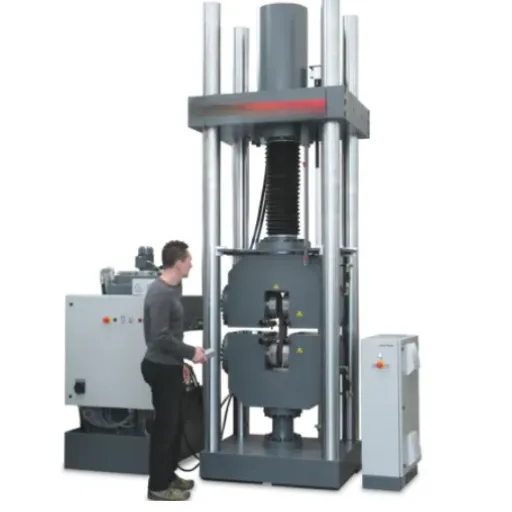
Equipment Errors and Troubleshooting
Errors in the equipment often pose serious constraints to proper calibration in compression testing. For force testing, load cell malfunctions are the most prevalent issue and their occurrence is typically linked to overloading, wear and tear, or not adhering to the set handling guidelines of the machines. Proper performance of the equipment can be maintained through consistent inspection and preventative maintenance to catch these issues in the early stages.
Environmental Factors
The calibration consistency and precision of compression test apparatus is highly influenced by environmental factors. The adjacent test apparatus is directly influenced by changes in temperature, humidity, and levels of vibration. The most common example is the testing machine and equipment used. When exposed to extreme temperatures, the components of testing machines expand or contract, which ultimately leads to calibration errors.
An error that occurs with equal frequency is the misalignment of the machine components such as the platen or the loading frame. Even load distribution is not achieved because of misalignment, which in turn affects the accuracy of the test. Regular checks and adjustments should be done by the technicians to ensure that the alignment complies with the set standards. The majority of misalignment problems are resolved through simple adjustments and these adjustments help the tests to be accurate.
In the end, test calibration and processing of the tests can be disrupted by errors related to software. These errors can be anything from system configurations that are wrong, software that is out of date, or data files that are corrupted. To solve this problem, make sure that the testing software is updated as needed and that all calibration settings adhere to the specifications. Also, holding training sessions for the machine operators can help reduce the misuse of the software and make operations more effective. Organizations stand a chance to improve the reliability and accuracy of the compression testing equipment by addressing these issues step-by-step.
Compression test equipment functionality can be compromised due to high humidity as a result of corrosion of the components and degradation of the components of the equipment over time. Exposure to high humidity poses risks to the precision of the equipment, particularly those that have parts that are sensitive to moisture. The test areas for compression testing should be kept dry and well-ventilated during operation to allow for easier access in dealing with corrosion and degradation of parts due to maintenance.
In addition, external or nearby machinery vibrations can disturb the testing machinery and cause measurement errors. Testing machines should be isolated properly, for example having them in different rooms or on floors that are free from vibrations, to prevent such problems. The systematic correction of such problems can help greatly in preserving the dependability of the machinery and the effectiveness of the processes of calibration.
Improper Handling and Its Impact on Results
The accuracy and trustworthiness of compression testing can be significantly compromised by improper maintenance of the testing machines. For instance, damaging critical parts or misaligning components due to improper care will certainly have an impact on the performance of the equipment. This performance would also be affected by something as simple as loading samples in the wrong way or applying force that is not uniform. Both of these would certainly affect the validity of the results and would distort measurements.
Another consequence of improper handling would be contamination. Debris or residue would interfere with the testing if not prepared appropriately, or if the equipment is not clean. This kind of contamination often leads to data being inconsistent as well as a lack of repeatability in tests. No meaningful conclusions could then be made. In order to maintain reliability in results, proper cleaning routines and sample preparation techniques must be followed.
Also, as mentioned above, the calibration procedures not being followed will cause the settings of a machine to drift from its intended configuration. The equipment, as mentioned, may look normal, but this drift will cause the readings to be inaccurate. A set training for operators and a set recalibration schedule ensures that the recalibrations are done correctly and machinery is used in the proper manner; therefore, the test results can be trusted and correct. Thus, proper care and handling of equipment is a necessary step in any compression testing.
Best Practices for Maintaining Calibration Accuracy
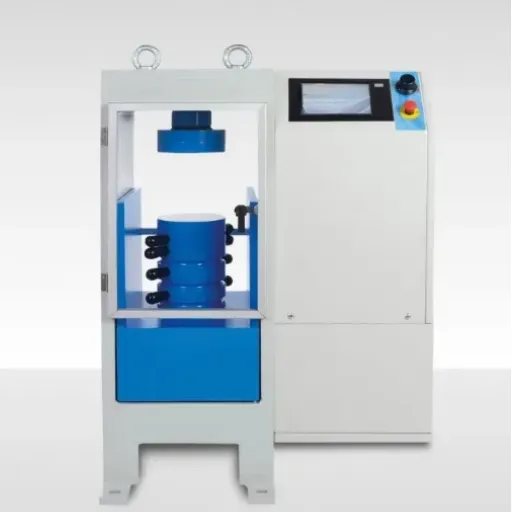
Regular Calibration Schedules
It is a best practice to maintain a consistent calibration schedule in compression testing equipment for the purpose of maintaining accuracy and dependability. In the course of repeated usage, compression testing equipment can deviate from its calibrated state. Such deviation can be caused by usage, environmental conditions, and even wear and tear. Consistent and repeated calibration will minimize the deviation and eliminate the potential impact of such deviation on testing results.
The calibration schedule of equipment is primarily dictated by the frequency of utilisation and the working environment of such equipment. Machinery that is used on a daily basis and is subjected to abrasive working conditions will require calibration on a monthly or quarterly basis. On the other hand, equipment subjected to lesser degree of usage and milder working conditions can be calibrated on an annual basis. Established industry standards, as well as manufacturers’ recommendations, should always be followed.
Apart from planning when calibration activities should be undertaken, it is critical to record calibration activities in detail. Having a record of the calibration date, outcome, and any further steps taken provides a clear picture of the maintenance history. In addition to helping with compliance auditing, such detailed records provide trust in the validity of test data in the future. Proper calibration is an essential best practice that protects the integrity of any compression testing.
Utilizing Calibration Services for Professional Standards
Calibration is the process employed to check the accuracy of compression testing equipment. Having the equipment calibrated on a set schedule helps in keeping with the set industry policies, increases the accuracy of the testing done, and also minimizes the possibility of errors. Calibration makes sure that the results obtained during compression testing are accurate and can be used for engineering, manufacturing, or research purposes.
Professional calibration services are necessary since they use proper methodology, accurate tools, and they may have proper quality assurance methodologies in place. Professional calibration services may perform the necessary adjustments to bring the equipment within the desired tolerances, perform accuracy verification checks, and issue detailed calibration certificates. Having proper documentation shows compliance with the regulations and increases the trust in the test results.
When calibration services are employed, the organization’s equipment is ensured to be functioning properly, and the possibilities of expensive mistakes or safety concerns are reduced. For organizations that are required to maintain strict quality control standards or for organizations operating in industries that demand stringent precision, these services are of great help. Guaranteed calibration protects the testing processes from compromise while promoting the sustainability of efficient operations and quality control.
Documentation and Record-Keeping for Compliance
Proper documentation and record-keeping are essential for demonstrating compliance during the calibration of compression test apparatus. These documents verify that the instruments have been properly calibrated to the specified standards. Thorough documentation supports the audit process and enhances confidence in the test results.
Calibration records for compression testing instruments must contain key information such as the instrument identification number, calibration date, calibration outcome, and the name or qualification of the calibration technician. In addition, for confirming the traceability of the calibration process, proper documentation of the standards or reference materials used is indispensable. This supports the reliability of the measurements obtained from the tests.
Documents relating to calibration should be stored safely, yet made available for quick retrieval. This is especially important during audits and operational checks, where the relevant documents may need to be produced promptly. Storing and retrieving these documents for compression testing calibration in the proper manner ensures safety and quality of the testing process.
Case Studies and Real-World Applications

Success Stories in Compression Testing Accuracy
Calibration is essential in assuring precision and dependability, namely, in compression testing, and its importance is evident from the numerous positive examples across different industries. Take, for instance, a laboratory for the testing of construction materials; their compression testing was inconsistent, which was later traced to an overdue calibration process. With the establishment of a calibration timetable supplemented with traced standards, the laboratory was able to produce reliable test outcomes. This not only enhanced the user’s trust but also enabled the reporting to be authentic and credible.
Likewise, in the aerospace sector, companies performing compression testing of their advanced light weight materials were already aware that calibration errors, no matter how small, would be detrimental to the data, and would put their large scale projects at risk. Ensuring the testing equipment is regularly verified and adhering to calibration procedures ensured that these companies were, not only in line with safety standards, but also prevented the incurrence of design costs that would have been undeserved.
The biomedical industry lends further examples in today’s critical compression testing of implants and biomedical devices. One of the research institutions experienced a decline in the speed of gaining approvals for their devices, which was alleviated once they implemented recalibration checks versus international standards, thus improving their test accuracy. This illustrates the positive impacts that proper calibration can have, ensuring that equipment performs as expected while accelerating approval for new products in other critical industries.
Lessons Learned from Calibration Failures
Proper calibration is vitally important in compression testing so that the results obtained can be relied upon and, as far as possible, replicated. The most important insight gleaned from failing calibrations is the way in which testing can be detrimentally impacted by inadequate or no calibration at all. Such is the case in structural testing, where the evaluation of a structural element stands to be jeopardised. Such testing data for other methods of construction can compromise every real-world application. Such risks, however, can be greatly reduced through timely calibration in accordance with recognised standards.
Poorly calibrated equipment is increasingly impacting the ability to gain regulatory approval, as noted in the compression testing of construction materials. Aerospace, manufacturing, and construction depend on such certifications and the timely receipt of proper calibration indicates a risk of financial and reputation damage. The device calibration helps ensure compliance with and proper testing for safety, which are devices that test to well, giving stakeholders more confidence.
In the end, ignoring the calibration of such devices incurs additional and avoidable costs. Doing so may at first appear to be a minor cost, but the failures that occur in the absence of proper calibration and the failures to retest and recall products may be costly in the longer term. By having a properly managed calibration program, using internationally accepted standards, and implementing scheduled calibration, an organization can ensure the dependability of their compression testing, thereby minimising downtime and avoiding expensive mistakes, which is beneficial to the bottom line.
Future Trends in Compression Testing Technologies
Calibration ensures that compression testing equipment is accurate and reliable. Productivity and testing accuracy can be maintained by regularly calibrating the equipment and ensuring that all performance metrics are met. Accuracy is of the essence. Even minor calibration errors can be detrimental and result in subpar product safety and quality.
Automated calibration systems are on the rise, and this is one of the most important developments in calibration for compression testing. Such systems are more effective and mitigate the risks associated with the human-compression calibration automation is also associated with the monitoring of metrics in real-time, which ensures that calibration concerns are dealt with in time. Addressing these concerns improves operational efficiency as well as enhances the dependability and consistency of testing.
An additional trend that is gaining popularity is the use of calibration data management and digital calibration technologies. The use of smart interrelated devices and sensors makes it possible to record and evaluate calibration data. Besides smart maintenance and the assurance of international standard compliances, this enables maintenance to be performed before the arising of any issues. Such progressions guarantee the dependability of testing equipment, which reduces downtime of the equipment and increases efficiency of the compression testing procedures.
Frequently Asked Questions (FAQ)
Q What is the importance of calibration of compression testing machines?
Without having calibration procedures done, there will be no guarantee of test result accuracy and reliability. In calibration, the automated system conducts a check to see if all of the machine’s measurements are in line with set standards, such as ASTM. Such a check aids in the detection of any discrepancies that may hinder the quality of the testing. Additionally, regimes of calibration ensure the apparatus continues to deliver quality performance.
Q How often should I have the compression testing machine calibrated?
Calibration intervals for compression testing machines is subdued to their use and standards of the industry. It is advisable, nevertheless, to have the machines calibrated once every year in addition to having it calibrated after undergoing any substantial repair. Precise measurement guarantees and calibration aid in retaining the equilibrium of your machine.
Q What does a calibration certificate indicate?
A calibration certificate issues proof of the calibration of a testing machine. It is proof of the calibration process, the standards employed, and the results given in the measurements. Such a certificate is necessary for testing quality and is used to check the set standards. A certificate also ensures that the equipment is properly calibrated and traceable.
Q What are the typical procedures involved in the calibration of compression testing machines?
The calibration of compression testing machines is a stepwise process. First, the machine is inspected, then force measuring devices are attached. Known loads are then applied to the machine, and the readings are compared with the standard specifications. Such a process ensures that the errors, if any, can be detected, which maintains the quality functions of the machine.
Q What role does a technician play in the calibration process?
A technician plays a vital role in calibration of compression testing machines because of the procedures and set guidelines required for such calibration. The technician is also trusted with the appropriate tools, which include force and load measuring tools to the equipment for accuracy compliance. Their knowledge in calibration is very important when it comes to the dependability of test results.
Q How can I ensure the accuracy of my compression testing machine?
Carry out regular inspections on your compression testing machine, conduct routine maintenance, and ensure your equipment is serviced as required. Also, ensure you use calibrated tools and that their calibration is up to date. Follow standard calibration procedures for your compression testing machine, such as ASTM. Implement an appropriate calibration interval as prescribed by the manufacturer.
Q What is the difference between tensile testing and compression testing?
During tensile testing, the material’s behaviour under tensile forces is evaluated, while in compression testing, the material behaviour under compressive forces is evaluated. For determination of strength, ductility, and toughness, testing of the materials using machines is important. For obtaining the right and dependable test results, proper calibration of testing machines is essential.
Q Can digital indicators be used in the calibration of compression testing machines?
Yes, digital indicators can be used in the calibration of compression testing machines. Not only can they be used, but they can also be linked to a digital system, which further enhances the accuracy of the calibration. Their use in the calibration process also facilitates advanced data analysis and collection. Maintaining the use of digital indicators further guarantees trust in the obtained test results.
Q What are the consequences of not calibrating a compression testing machine?
Ignoring calibration procedures of compression testing machines results in improper measurements. This, in turn, leads to improper evaluation of material properties, which is detrimental to the overall product. It may also lead to severe damage and retrenchment in the cost of meeting certain safety requirements, standards, and compliances. It’s vital that the risks incurred by not performing iterative compression testing machine calibration procedures are mitigated by adhering to an established testing schedule.
References
-
Calibration Procedure of Material Testing Machines – IMEKO
This document outlines the calibration process for material testing machines, including compression testing machines. -
Uncertainty Calculation for Calibration of Compression Machines – Elsmar
Discusses uncertainty parameters in calibration as per ISO 7500 standards. -
Tensile Testing Machine Calibration Standards – The Tech Plast
Covers ASTM E4 and ISO 7500 standards for calibrating tension and compression testing machines.

